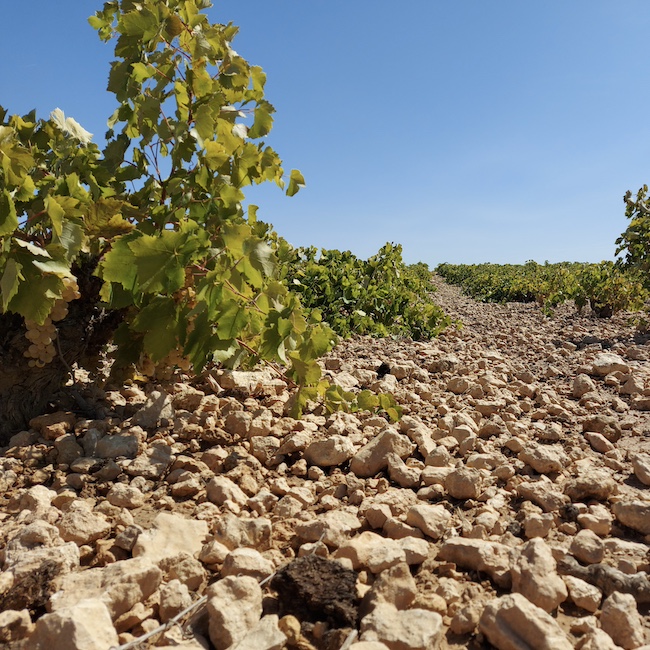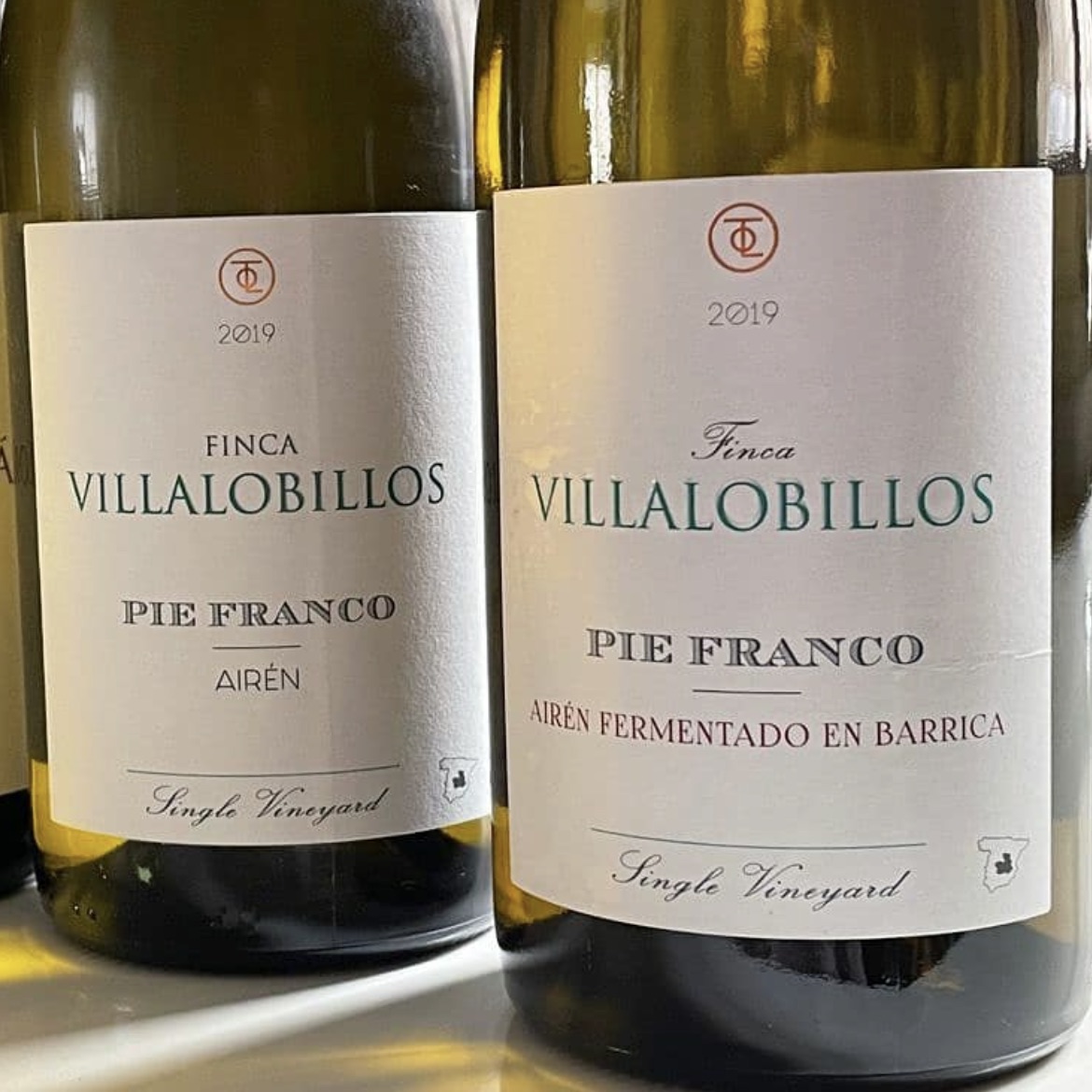by Anna Harris-Noble - @taste_exchange
.png.transform/rendition-xs/image_image%20(1).png)

by Anna Harris-Noble - @taste_exchange
Until 2022, when it was overtaken by Tempranillo, Airén was Spain’s most widely planted grape. It continues to be its most planted white variety with just under 200,000ha, but despite its ubiquity, it is a name you will rarely see on labels, as most is used to make grape juice, bulk blends or base wine for brandy. But several ambitious Spanish growers are forcing the wine world to rethink Airén, proving that when yields are restricted in old vine plots, it can produce world-class wines.
Castile - La Mancha is the home of the vast majority of the world’s Airén plantings. In fact, the grape is so widely planted here that the grape is also known as Manchega. The arrival of Airén revolutionized the wine industry in La Mancha. Its yields and profitability, as well as its potential for high alcohol, led to the displacement of other grape varieties such as Malvar and Pardilla,” explained Miguel García de Lara from Bodegas García de Lara, whose family planted Airén just after the civil war.
“Airén was planted in the poorest soil at the highest altitude where no other crops would grow. It was ungrafted, simply as this was the cheapest method of planting,” García de Lara continues. “The vines were maintained on our estate as we had the luxury of making money through other farming activities, where as smaller growers took the subsidies to pull up the lower-yielding old vines as they weren’t profitable.”
In fact, Airén is Spain’s, and probably the world’s, most grubbed-up grape with a loss of more than 43% of plantings in the last 40 years: “Modern vineyards planted with irrigation systems have the capacity to produce much higher yields, so we are losing the heritage plots.” Laments Elías López Montero, who launched Las Tinadas from his family’s 72 year-old plots of un-grafted Airén in an attempt to ensure the future of the vines.

“In 2017, I was in the Master of Wine programme, and attended a lot of tastings, but not a single Airén wine was shown, it’s just not known in the market. So in 2018, I came back to the winery with the determination to make the best Airén possible. I sent a bottle to Jancis Robinson MW and saw a picture of Las Tinadas on her Instagram saying it was the best Airén she had ever tried. It proved my belief that we could create a category for old vine Airén if we worked with tenacity.”
Juanjo and Carlos Cerdán of Bodegas Cerrón also returned to their family village of Fuente Álamo in Jumilla DO in 2011 with aim of safeguarding the old vines of the area. In Jumilla, these are mostly Monastrell but there are still around 136 hectares of old vine Airén left in the region. “Removing old vines is like knocking down a 1,000 year old church.” Juanjo exclaims.
El Cérrico Airén is produced as part of their Stratum range from a plot planted by the brothers’ great-grandfather in the 1920s. With smoky struck match notes and mineral tension, many critics have been astounded to discover that it is made from this once reviled grape. In fact, Tim Atkin MW awarded 100 points to the 2021 vintage of the wine.
El Cérrico is produced using clay amphorae. Far from being a modern fad, Elías López Montero explains that they were widely used in the past: “We use 100 year-old clay amphorae to make Las Tinadas. We are restoring some old tinajas from our family’s original winery - of which there were thousands in Tomelloso - to try to maintain this historic tradition and bring more typicity to the wines.”
Neutrality as a virtue
López Montero believes that Airén’s neutrality is a benefit for winemaking: “It’s an austere grape, low in proteins so there is no need to clarify it with bentonite, so you can keep the purity of the grape and the terroir. The grape is quite light but I think this is an advantage, it is better at expressing the conditions of an area than more aromatic grapes. It is a fantastic grape when cultivated in the right way.”
He goes onto explain how the limiting yields is crucial: with irrigation Airén can yield much as 50,000kg/ha, producing neutral wines ideal for distillation. But old vines on poor soil will produce less than 10% of this amount, and create much more characterful wines.

Versatile and rewarding
Beyond the use of tinajas, many producers are experimenting to make Airén in a wide range of styles. Bodegas García de Lara vinifies grapes from its Finca Villalobillos estate in both unoaked and barrel-fermented styles, the latter using lees-stirring for greater texture. Both wines are astoundingly long, fresh and complex.
The winery behind Pesquera, Familia Fernández Rivera, was one of the first to head to La Mancha in search of old vine Airén. Its El Vínculo Alejairén Crianza proves that the grape can also be oak aged, spending 14 months in French oak barrels before release.
Back in Jumilla, Bodegas Viña Elena uses Airén to make both orange and rosé wines in its Bruma del Estrecho de Marín range. Encebras comes from very dry, stony plot of Airén that was planted in 1976. After six days skin-contact, it is aged under flor in demi-johns, creating an orange style wine. The winery also blends Airén and Monastrell in a clarete, a field blend from a 65 year old vineyard called Particiones.
Garage Wine (Bodegas Toledo & Ajenjo) also uses a short period of skin contact to add a golden colour and depth to their wine made from the Alto Losar single vineyard plot of Airén in Quintanar de la Orden planted by their great-grandfather in 1940. Unoaked, its broad, waxy texture comes from lees contact, while the chalky soil adds to its mineral character, providing freshness.
In a move that further proves the grape’s versatility, the García Pérez group is planning to launch a tank method sparkling wine from 60-year-old organic Airén vines grown on limestone soils at 1,000 metres altitude in Casas-Ibáñez, one of the coolest areas of Manchuela DO. Despite being known for its low acidity, the winery believes that it has found the perfect combination site to produce a quality sparkling wine from Airén:
“We decided to make a sparkling wine as it allows us to showcase the aromatic profile of Airén as well as its expression on the palate: flavourful and creamy, with a balanced acidity that comes from the chalky soils and the altitude.”
Old vine Airén has a further point in its favour, which may help ensure its survival in the face of climate change - its drought resistance. As water becomes a scarce resource, many other Spanish producers may take another look at this adaptable variety and follow these trailblazers in creating cellar-worthy wines from La Mancha’s most widespread grape.